The next few months were a turmoil and the saddest period of our lives. Baba had not been keeping too well and was exhausted running around to the Calcutta Corporation for Ma’s tenanted ancestral house. The tenant had stopped paying rent long back and the taxes were mounting. He had more or less sorted out the tax problem. That same night when our marriage was agreed upon, and we had a wonderful dinner at our relative’s place where Baba went to give the good news, he started getting chest pain around midnight and passed away in a short time. My Ma went into acute depression as her life came to a standstill in Calcutta. The Bhattacharya family stood by us arranging everything. Later when the shraadha 1 was over, as I had my final MBBS exams within two months, they got my train ticket, gave me money for survival and enough to cover the exam fees. Ma was taken to Pune by Didi. After my exams got over, Prodeep came to Bhopal, got tenants for Ma, sold off our car and tried to settle her in. Having no idea how to go about it at that age (23), he still managed. It worked out somehow when all seemed lost in an unknown city for him.
The Civil Services results were out and he was selected in the IAS cadre. The morning paper in Delhi had the list of the successful candidates. I saw his name and immediately rushed to Eastern Court, the telegraph office in Connaught Place, to send a congratulatory telegram with the pittance of pocket money I was left with. Since the telegraph office in Calcutta was just below their flat on Russel Street, the message reached fast. It was still early morning. Prodeep had no idea why the congratulations. I received a telegram by the afternoon ‘Befuddled. Why congratulations?’ By then Prodeep’s Baba rang up his brothers in Delhi to look up the papers if any results were out. They confirmed the good news.
The Rhodes Scholarship stipulated the scholar had to be a bachelor for the period of study. With my Ma in deep depression and unable to function normally, Prodeep decided to join government service in India, as going abroad now without getting married for 2 years or more would not be wise, with no one to take care of me and Ma. His parents, though disappointed at his not accepting the placement in prestigious foreign universities, went along with his decision to stand by us and were happy that he had got into the IAS.
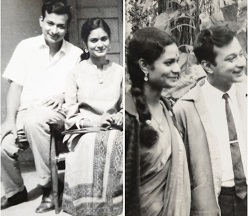
We got married after my MBBS results and before internship started (I would start earning the royal sum of Rs. 150). We got married in 1971 in the Brahmo Samaj Bhowanipur 2 for just Rs. 2500 which was arranged by my maternal uncle. For my bridal make-up my Mashi (aunt), Mrs. Ila Palchoudhuri (a Rajya Sabha MP) had it done in her newly opened beauty parlour, ‘Kabori’ on Southern Avenue 3. One Gostho Kumar did the bridal attire (he worked in Mashi’s sari printing boutique). He later opened his own sari shop on Russel Street named ‘ANANDA’ which is still very popular. The wedding and bridal make-up, all being wedding gifts from relatives, my Ma didn’t have to worry too much as she was still floundering and wasn’t sure how she would manage the wedding expenses.
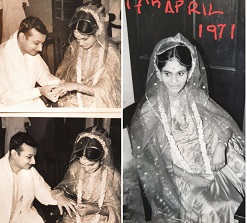
The photographs of the ceremonies were meticulously arranged by our friend Ramchandra Murti Kaza who was in the final year at NRS Medical College. He was my close friend Rupali’s fiance. He along with his friends Syed Ferozie and Mahinder helped us in so many ways throughout. They got the photographs beautifully assembled in an album and presented us as a wedding gift later. Dr Murty became a renowned Urosurgeon and a Master Trainer in United Nation Family Planning Association. Dr Ferozie a well known Ophthalmologist in Kolkata. At my in laws place we had the Hindu marriage ceremony and the reception was in Parish Hall, St Paul’s Cathedral, quite an amalgamation of Brahmo, Hindu and Christian wedding, as my Father-in-law joked later when the registration was being done.
‘Bees Saal Baad’(Twenty Years later)4is the caption I give this story as we met in 1951 and got married in 1971. We don’t meet people in our lives by accident. They are meant to cross our path for a reason.

I started my internship in Delhi and Prodeep went to Mussoorie as a probationary officer. The whirlwind period seems like a dream. My life unfolded between 1966 and 1971 in a dramatic way. I was only prepared to face the tough medical studies and never imagined so much would happen. Struggling with the tough study schedule, interspersed with appearance of the love of my life out of nowhere, Baba’s untimely death and Prodeep’s career-change plans all tied to these events.
Bhopal and MP were also changing drastically. CP and Berar had become Madhya Pradesh in 1960. Jubbulpore became Jabalpur. Whenever I came home for holidays between 1966 and 1971, Baba was away on tours to Gwalior and Chambal areas as dacoity was rampant and the police was there in full force to tackle the menace of the ravines and jungles. Sometimes in the evenings, when Baba was at home with other officers sitting in the lawn discussing strategies, we would hear snatches of their conversations of encounters with dacoits, of the police confidential informants (mostly villagers of those places,) and police undercover.
On one of Baba’s routine tours of Gwalior, Bhind, Morena we went with him in his sturdy Chevrolet and his policemen accompanying him in the Black Maria vans as rapid transport vehicles were required, besides half-ton trucks for the plainclothes police force. All these were strong, tough vehicles of the 1950s and 1960s. The Chevrolet had nothing in common with the sleek car of today. As we left the city limits and entered villages and adjoining forests, everything seemed so ordinary and peaceful, a perfect picture postcard village setting. The officers brought to our notice a few interesting things which were happening. There were bamboo wicker fences at some places which had to be lifted for the vehicles to pass through and there were many along the narrow forest pathways. They were left open for the return journey, but we found that they were being pulled down very quickly. We couldn’t make out how it was happening. Maybe unseen rope pulleys at some distance. These were the villagers in the confidence of the dacoits to warn them about police presence.
We also saw a mustachioed, muscular villager sitting near a village at some distance from where we passed, tending his herd of goats. He was MAN SINGH the dreaded dacoit. It was a different Man Singh when he and his gang struck at some ostentatious and wealthy marriage ceremony or involved in an encounter with a rival gang.
It was around these times that the Hindi film ‘Mujhe Jeene Do’ (Let me Live)in 1963 was being shot with leading actors, Waheeda Rehman, Sunil Dutt, Cuckoo. Baba was there with his police force for any unforeseen events in these dacoit infested places. We got to hear many stories of the stars from Baba, and he also got their autographs for us, personalised with ‘love and all the best to you’ with our pet names that Baba dictated to them.
Another popular novel written in Bengali by Mr Taroon Kumar Bhaduri “Abhishapta Chambal,” (The cursed Chambal) too became a film. Bhaduri was the special correspondent of the newspaper, The Statesman, Calcutta, posted in Bhopal at that time. His 3 daughters Jaya, Neeta and Rita were our friends as all Bengali families were then in Bhopal, a brand new township formed in 1960. Jaya went on to become a film star. Her first film was Satyajit Ray’s Mahanagar while still in school in class 7. We used to pester her for stories of all the stars she met. Sharmila Tagore and Suchitra Sen5 had become very friendly with her during her shooting schedule over the school summer vacations. She took me to meet Dilip Kumar6 when he came to Bhopal at the invitation of one of the stud farm owners. His film ‘Ganga Jamuna’ had just released and of course he was a superstar. He asked Jaya what her ambition was. She replied that she was going to be a film star. He then asked me standing beside her. Being tongue-tied in his magnetic presence, I blurted out, ‘I want to be a doctor’. He looked at Jaya and said ‘Your friend has UCCHA VICHAAR (noble thoughts). Try to learn from her.’ That was my encounter with a superstar and his praise of me! I was in the seventh heaven.
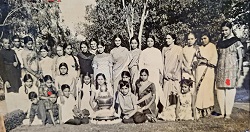
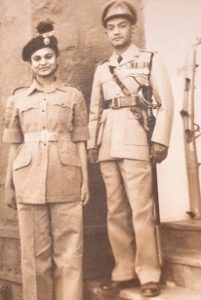
Jaya and I were in school together as well as in the dance school and music classes we attended. The annual Vikram Samaroh of the All India Dance Competition in Ujjain was an exciting event for all the students of our Kala Padma Dance School. In 1966, we won the first prize, the “Swarna Kalash” in the dance drama, “Indumati Swayamvar”. The group was given a gala reception by the Governor at the Raj Bhavan on our return to Bhopal. This was one of the exciting highlights. Along with Bharat Natyam, NCC7 was also compulsory in school and college. Attending rifle-shooting classes, NCC camps and regular march pasts were the other highlights of my teenage years.
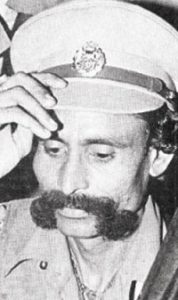
A Farewell to Arms: This historic event happened in the 1960s and early 70s. The Gandhian Vinobha Bhave and later Jaiprakash Narayan and the Chief Minister of MP Arjun Singh, were the leaders who relentlessly worked to bring about a change among dacoits. We heard that, watched by a huge crowd of cheering spectators at a well-publicized ceremony at Bhind in Madhya Pradesh, the dacoit leader Malkhan Singh and nearly 20 of his gang members came out of the recesses of the Chambal and other ravines to surrender their arms to the CM. Malkhan Singh, who had carried out a reign of terror for long, came in police uniform as he was always seen wearing one, walking with supreme confidence like a conquering hero. He was tall, lean with a thick twirling moustache. He ascended the dais, dropped on his knees to touch the CMs feet. The assembled crowd roared and clapped in approval. He stripped himself off the rifle and his Chinese 9mm pistol and laid them before a portrait of Goddess Durga. It was a regal act of submission. His followers did the same and a huge cache of arms and ammunition was laid down. Before the surrender was negotiated, Malkhan Singh carried a price of Rs. 70, 000 on his head.
Many dacoit leaders and their gangs started surrendering. There were many permutations and combinations between the gangs and massacres of rivals too. The notorious Dacoity Era came to an end by the 70s. Many were killed and many surrendered. The famous names we used to hear often were Phoolan Devi, Vikram Mallah, Chabiram, Ramesh Shikawar, Rupa. The fate of the surrendered was interesting. Some had to serve life imprisonment, some became Members of Parliament. Some who served a few years were released for lesser crimes and rehabilitated by the CM. They were given shops in a shopping complex of Bhopal to start their business like meat, vegetable, fruit, paan sellers. I have seen many of them making an honest living. It was hard to believe that these were the same notorious Dakoos whom we later met daily in the market place.
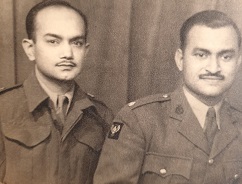
The Roy Family (1959 – 1962): Since my memoirs are of the1950s and the 1960s I cannot leave out our association with the wonderful Roy family. Baba again met another army colleague from his Mhow training days, Capt. S.C Roy. He was also in the Signals Corps. He was posted in Jabalpur and their house was near ours. Every morning, while going to school on our Hercules bicycles Didi and I, would see Roy Kaku in his garden watering the plants. We would vigorously wave out to him peddling away furiously. He would do the same, wave with the hose pipe and a grand spray of the water like a dancing fountain. This was our daily routine. They had 3 children: Sudeep, Urmi and Tapti, who was the youngest and still a babe in arms. We played with Sudeep and Urmi in the evenings. The games were hide-and-seek and dark-room.Their big British colonial house had many places to hide. The dark-room game was spooky as the nooks and corners looked creepy.
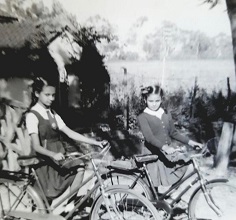
Once our games were over Kaku would round us up in the living room for story telling sessions with Tapti on his lap, while Kakima got busy preparing delicious snacks for us. At our insistence, he would tell us ghost stories. He must have made them up on the spur of the moment. We were scared but kept wanting to hear more in our childlike delight. Kakima would feed us tasty tit bits which we digested along with the ghost stories.
Their servant Kanhaialal would appear from the kitchen, which was a little distant from the main building linked by a corridor. I always thought he was a ghost appearing slowly through the darkness into the corridor, walking towards the living room with the tray. I loved imagining him to be a ghost springing out of one of Kaku’s eerie stories.
It was at the insistence of Urmi and Tapti that I was encouraged to write some interesting memories of our childhood. They have been a part of my childhood and the family carried forward the friendship to this day more than 60 years later. After Kaku got transferred, we visited them on holidays and enjoyed those vacations in the various places they went. It’s amazing the way the coincidences of our lives intertwine and continue in such a beautiful seamless way. Kaku was there in Kolkata when Baba passed away in 1970.He was a great help to Ma and me in arranging and doing all the needful.
Sudeep also got into the Civil Services with Prodeep in 1971. He and Malabika got married around the same time as us in 1971. Imagine our surprise on meeting them at Gopalpur-on-Sea at the same honeymoon destination as ours.
Years later Tapti became a very dear friend of our daughter in Dubai. The age difference did not matter. They are still very close though Tapti is in England and our daughter Deepanjali in Mumbai.
All these are divine interventions and mysteries of the beauty of friendship, love and so much more, forged long ago, continuing through the third generation of our families.
My innocent childhood will never come back but the child in me will never leave.
Dr. Nandita Ray Bhattacharya is a Pathologist. She lives in Kolkata.
Footnotes
- funereal rites
- Temple for Brahmos, a reformed sect
- A major road, next to the Lakes in South Calcutta
- Also the name of a very popular Hindi film of 1962
- Leading women actors of Bengali and Hindi films
- Very popular star of Hindi films
- National Cadet Corps, a voluntary youth wing of the Armed Forces
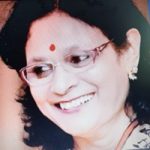
The writing isbeautiful…Painting pictures with simple easy language that draws the reader to it compellingly . Nandita presents the world she grew up in ..
…a priveleged ,joyous secure world which enabled her to tide over hard times with resilience in a refreshingly honest manner
Very evocative and informative, too! I think there’s a novel waiting to be written, with all the ingredients of a bestseller: family friendships, love story, tragedy, philosophy … not an Elizabethan one, but Romantic-Victorian, surely!
Captivating. Enjoyed reading. Thank you.
A engrossing story. Takes us back to the 1950’s -70’s in a way history books cannot.
Very detailed descriptions of your life
Well written
God bless you all
This is the most interesting story of Pastconnect. Wonderful and captivating.
Thanks for writing such a beautiful story. When jethu(your father)passed away the whole family was in tears and my father said that he lost a brother. I cannot forget our days in Jabalpur which we have such fond memories.
Oshadharon…